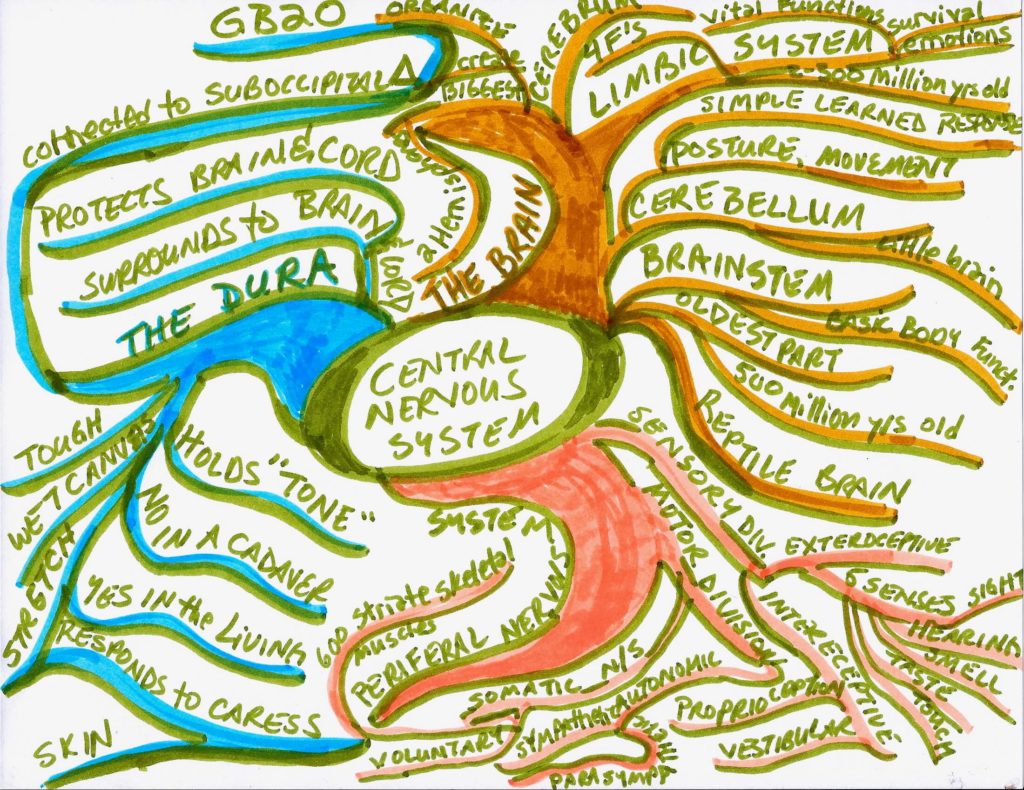Embodied Autonomy, Read Me First
Dissociation, Prolapse & Pelvic Floor Function
PROPRIOCEPTION
Accurate proprioception (knowing where you are in space) is a use-it-or-lose-it proposition. Due to scar tissue and inflammatory factors, essential functions of pelvic floor organs and genital tissues can be affected. Scar tissue causes thickening of the extracellular matrix (the ECM is the goop between your cells) and reduces blood flow, neural messaging, and sensory integration, eventually interfering with the proprioceptive literacy in your pelvic floor. This is also known as dissociation; it’s the inability to feel parts of your body.
In therapeutic models of proprioception, it is suggested that if you cannot feel what is happening in your pelvic floor, its healthy function may collapse. The mental representation of pelvic floor muscles, encoded in the sensory-motor cortex of the brain, goes dark. A feedback loop develops, promoting desensitization. When this happens, physical structures within the pelvic floor (deep pelvic floor muscles, for example), fail to correspond accurately with your now-dark mental representation and thus receive less information from the nervous system. Consequently, your sense of balance and genital sensitivity gradually decrease. There is a lack of regular positive feedback, which tells your nervous system to send adequate blood and nerve supply to these muscles. The result is muscle atrophy and loss of the resilience of your connective tissue. These contribute to prolapse. Prolapse is the slippage of pelvic organs including your uterus, bladder, and rectum. Once these organs displace even a little, prolapse can easily progress so organs begin to protrude out of the vaginal or rectal opening.
NERVE COMPRESSION
Over time, dissociation due to subtle nerve compression (whether from scars or chronic muscular tension) becomes progressive and has a dampening effect on the normal propagation of neural impulses. Furthermore, if scar tissue develops into an adhesion, the adhesion itself can actually create pain, because adhesions generate their own nerve supply. Adhesions are often found during gynecologic, birth-related, and abdominal surgeries, such as C-section, appendectomy, and hysterectomy. Adhesions become especially common after hysterectomy, as does bladder prolapse.
SCAR TISSUE
When scars are present in abdominal, pelvic and genital tissues, pleasurable sensitivity diminishes, often to be replaced by pain or numbness. As pleasurable sensations are lost, the very nerves that once propagated pleasurable impulses become compressed by thickening in the ECM. Nerve compression can create pain impulses, to which the spinal cord becomes habituated. Once the spinal cord has habituated to pain impulses, frequently they are not felt as acutely, and the cost is impaired information-flow between the brain and pelvic floor. The resolution of spinal cord habituation to pain or loss of sensation takes considerable time, mindfulness, and attention to ongoing physical practices. This is especially true when working with prolapse.
MUSCLE ATROPHY
Eventually, tissue stiffening and muscle atrophy affect motor control and your sense of balance. In an aging pelvic floor, muscle fibers are gradually replaced by scar tissue. This process compromises overall pelvic floor tone and reduces the contracture of pelvic floor muscle fibers the way the body’s weight is distributed during sitting, standing, and walking. Muscle atrophy and its replacement by scar tissue contribute to diminishing sexual response, pelvic organ prolapse, urinary, and fecal incontinence. Atrophy can also lead to injuries such as a broken hip, resulting from a “darkness” in your mental map, leading to loss of balance. Regaining one’s proprioception is a critical part of working with postpartum, post-surgical, and aging bodies.
ASSESSMENT
Each person’s pelvic floor dissociation has its own cause. If you want to change the effects of aging, including atrophy, prolapse, and incontinence, an assessment will help to discern the root of your problems. Together, we will map out a plan to restore healthy pelvic function, and sensation. Learn more about the assessment process. When you demonstrate commitment and a genuine desire to make necessary changes, there is the possibility to continue our journey together by coaching with me. During coaching, we partner to develop and refine your health practices, applying the insights gleaned from your assessment. The result is a rediscovery of your embodied autonomy, one step at a time.
If you’d like to schedule an assessment, learn more here. If you’re not sure you’re ready for a full assessment, but would like to explore some basic questions about your pelvic floor in an introductory session, learn more here. To read about what others have said about their assessments and coaching experiences with me, see the testimonials.

